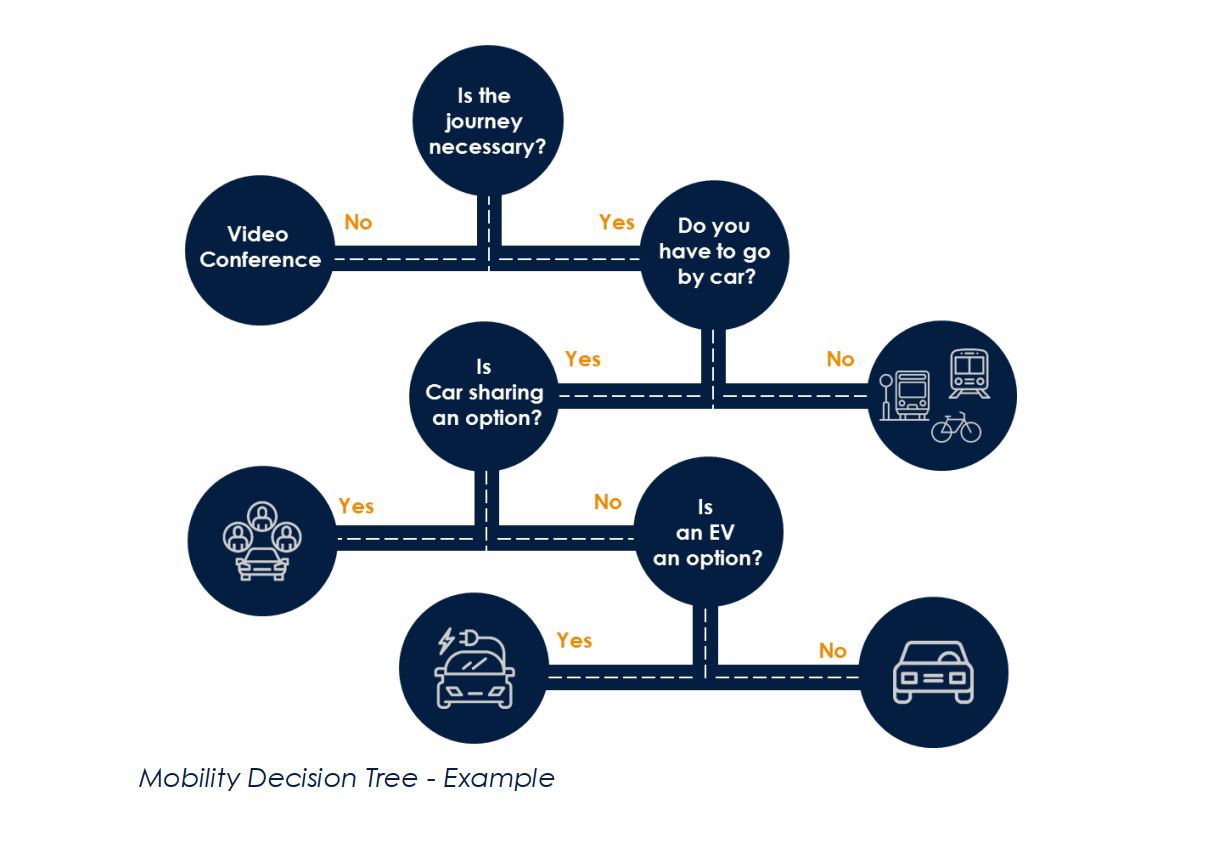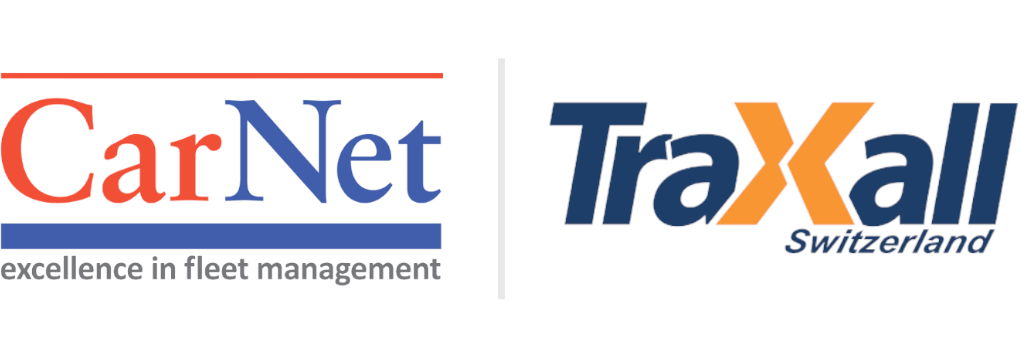Mobility means flexibility
Fleet mobility is changing the landscape of fleet management.
The advent of a new concept of ‘mobility’ has led to a shift in the way we travel over recent times. Due to high vehicle ownership costs, a need and desire to be more green, and increased congestion across cities, people are now considering alternative transportation, such as car-sharing schemes, taxi-hailing services, bicycles and electric scooters. For fleet managers, this has meant their role has been changing. Beyond their core responsibilities of looking after company vehicles, they have been increasingly overseeing a wider variety of transportation options, as well as getting to grips with new mobility tech.
The coronavirus pandemic could serve to accelerate corporate.
In the immediate aftermath of the coronavirus pandemic we may see a reluctance among some to travel in close proximity to others in shared, or on public, transport. Employees will have become comfortable and accustomed to social distancing measures so the car may be seen as a safe haven. According to a Fleet Europe survey of almost 400 global fleet professionals, 33 per cent of fleet buyers believe the pandemic won’t have an impact on the utilisation of car sharing as an alternative company mobility solution (24 per cent said it would, while 43 per cent said it wasn’t applicable for their business). Furthermore, a quarter of the fleet managers who responded said accelerated integration of new mobility systems was a key opportunity coming out of the crisis.
From crisis comes opportunity
Global workforces on a fast track to more flexible working practices.
While no one can be certain how the pandemic will impact corporate mobility, as Leomont Wouda, TraXall’s International Development Management Director, pointed out in his previous blog, any initial reluctance to travel in shared modes of transport is likely to be shortlived and fleet managers should still look to embrace mobility management to help reduce costs and the size of their fleets. Indeed, this now may happen more rapidly than had previously been anticipated, as the trend towards increasingly flexible working practices is fast-tracked among global workforces – a direct consequence of the lockdown and post-coronavirus business landscape
“Mobility means creating integrated solutions for the efficient use of car sharing, bicycle systems, public transport, taxis, car rental and aircraft as well as hotels and parking spaces.”
Four steps to successful fleet mobility management
1 Establish a mobility policy
Employees and their mobility preferences should be considered in the transformation process.
When looking to launch a fleet mobility policy, businesses must first look at the options available to lower costs or reduce emissions without any impact on efficiency or productivity. There can be little point in scrapping company cars in favour of public transport if the latter takes three times as long. It would also be worthwhile asking employees how they currently travel and how they would, in an ideal world, prefer to make journeys. Making an investment in a particular form of transport would be a waste if no staff member wants to use it. Businesses, however, should also consider the employer and employee tax considerations of the different transport options.
Gain employee buy-in from the start
Although a transition to mobility management may not be applicable for all businesses, such as those providing service maintenance services, where it can deliver benefits the support of employees is key. If your workforce understands what is available to them and why changes are being made to how they travel for work, they will be more likely to get onboard with them. For example, if a business wants to use mobility to reduce its carbon footprint, use internal communications to promote the personal, business and environmental benefits of sustainable travel, such as carsharing schemes and city bikes.
Good planning and transparent communication reduce unexpected costs and dissatisfaction.
If employees are able to make their own travel arrangements, it is important to communicate the details of how to book, whether that is through dedicated suppliers or through one company-wide integrated booking system. This will help to prevent hefty, unexpected invoices coming your way. This can also be avoided by setting budget constraints, as well as asking employees to plan ahead to avoid the expense of last minute travel.

“Using a decision tree and a specified questionnaire, individual driver profiles can be defined to make the right decisions regarding fleet and mobility requirements.”
2 Provide alternative travel options for employees
A successful mobility plan doesn’t just focus on company cars, rather how employees can travel from A to B in the most cost-effective, efficient and greenest way. For example, if an employee mainly travels in busy cities, traffic congestion and lack of parking spaces make using a car impractical, as well as eco-detrimental. Instead, public transport or cycle schemes would work better.
The demand for more sustainable travel options is on the up.
Put simply, fleet managers should be giving employees the option of transportation methods. More and more people, especially younger generations, are demanding more sustainable options, as well as connectivity and convenience, giving a rise to on-demand services. In fact, according to Deloitte, up to 35% of generation X and Ys question their need to own a car due to the availability of ride-hailing services.
3 Leverage tech for business
Mobility cards with set allowances can help control spend.
To help control mobility spend and prevent costs from spiralling, businesses should look to utilise the power of budgeting tools. Mobility cards are a good way to allocate a spend-peremployee, giving workers a set allowance each month to select the most appropriate mode of transport for their needs and resulting in much more efficient journeys.
Software can reveal performance against KPIs and show the true TCM.
Thes should link into a wider system, however to provide fleet managers with cost trasparancy. From managing external transport provider accounts to viewing vehicle usage and tracel expenses, software can be used to see the bigger picture, allowing for the benchmarking against performance indivators to see the total cost of mobility (TCM).
Monitoring and management of the least congested, cheapest and greenest way from A to B.
In the past, travel options would often have to be booked separately, booking a train via one platform then using another to pay for a car share. Now, smart cities are paving the way for mobility as a service (MaaS), transforming the way people can travel by providing a more integrated experience. This evolution is still in the early phases of its development and currently multiple solutions may be needed. However, the ultimate vision is the consolidation of multiple vendors into one platform. Fleet managers can also see the best way to get from A to B, with the platform using real-time information such as congestion, prices and availability to suggest the most suitable means of transport. Not only does it help save on travel time and costs, but it will also help the urban environment, cutting down on traffic levels and CO2 emissions.
Telematics can play a key role in the move to mobility.
Today’s systems can link vehicles to other connected devices, such as smartphones, capturing vehicle performance data for smarter decision-making. Having a telematics system that can integrate with back-office platforms can provide numerous benefits. A CRM integration, for example, can suggest more efficient ways of completing sales appointments by analysing each employee’s fuel usage and mileage.
4 Provide tech for drivers
Mobility means different things to different people. For some businesses, it simply means a more flexible approach to travel and getting an employee to where they need to be in the most costeffective, greenest and convenient way.
Smartphones have a key role to play.
Technology in our pocket is already helping to do this. From hailing a taxi and locating a shared bike to EV service points and determining to the quickest route using real-time maps, smartphones are making access to transportation services easier and allowing employees to take control of their own journeys. Companies such as TraXall can integrate data from different large providers to provide consolidated reporting for accounting and HR purposes.
